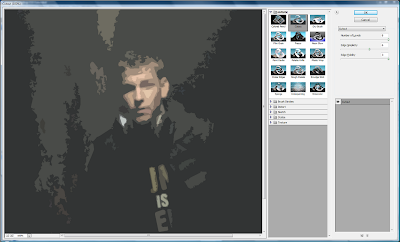Critical evaluation Question 4
How did you use new media technologies in the construction and research, planning and evaluation stages?
This website was used to advertise the music video, so that I could then gain feedback from a selected audience. Due to facebook acting as the global village on web 2.0, it was an ideal location for me to begin advertising my music video for others to see. It ended up being where most of the views from the music video came from, so it was a very successful idea.

Blogspot
Blogspot was where all of my research and planning was placed, so that I could know what I was doing step by step, and could work on it from home, and carry on in school also. Using this allowed me to create an appealing, detailed coursework project, showing everything I have done by date and time, and also allowing me to see how I have progressed, from doing initial research on main-stream artists, to then end up creating my own music video, DVD Digipak and magazine advert, to copy some of their styles. Blogspot enables me to broadcast instantly to the public, displaying any videos, images or written documents, making me take the role of an editor.
YouTube
This website is possibly the most well-known and most used areas for hosting music videos. I decided to use this website to upload my own music video, tagged according to what similar artists have included on their videos, but also giving certain keywords that relate to the artist, in terms of genre, locations, music channels and similar artists. The global village principle links with websites such as YouTube, allowing you to post something that would be seen by people from all around the country, as my music video did show this, as I had people watch it from areas such as USA and Germany.
In terms of hardware, I was able to gain access to some of the best quality cameras and video camcorders available. During the prep work, I took a lot of pictures of locations with an SLR camera, allowing me to get a big resolution of the images so I could get a good idea of what a scene would look like in this location. When the recording took place, I used a normal video camera, and then used a HD video camera for the green screen footage, that was then converted back to a standard resolution to suit the rest of the footage. The reason for using a normal video camera is due to it being easier to use in the department that we would edit in, as they work with the computers, and because there are so many of these standard video cameras, I didn’t have to worry about there not being one available when I needed to go out and film.
I did use certain other pieces of hardware during the further stages of the course. I used a scanner to copy some images from researched magazines onto the computer, so that I could include them as reference images for my research into magazine adverts.
There wasn’t a lot of different software that was used during the project, but that’s due to the software being able to do all of the tasks without needing many different ones to do every little part.
iMovie
During the stage of creating the music video, all that was used in terms of software was iMovie, a free programme with Apple Mac computers, allowing the use of pro-sumer technology to create a music video that would be shown to the public. So much footage was gained that several iMovie files were created, to allow files to not get confused and so that each stage of the editing could be backed up.



















